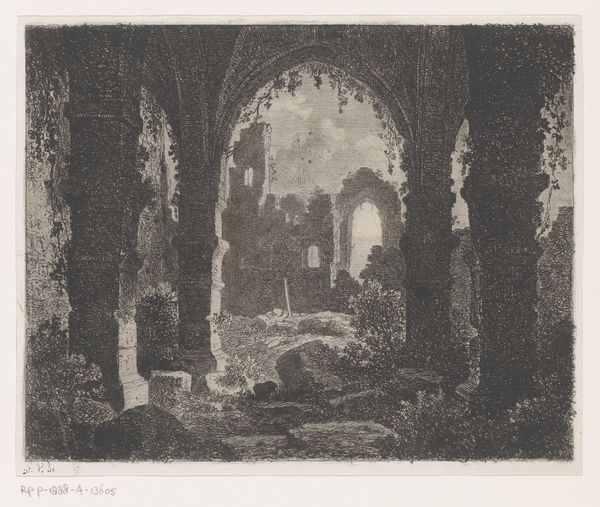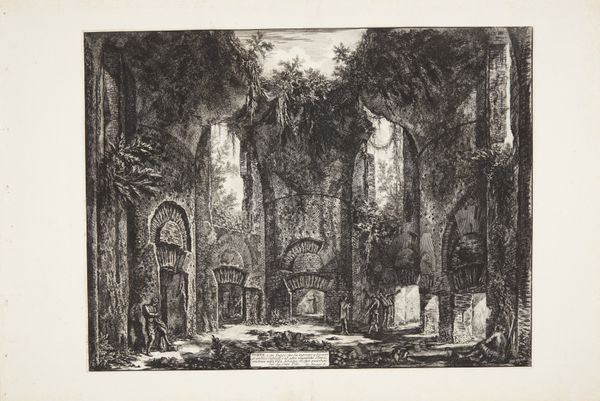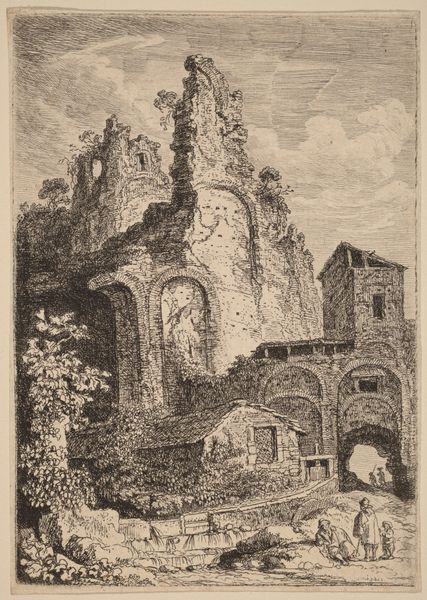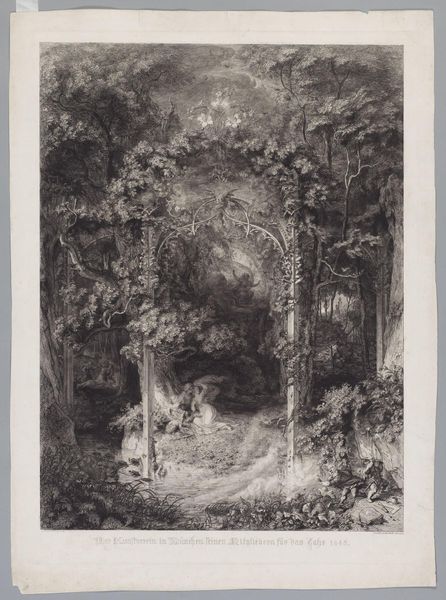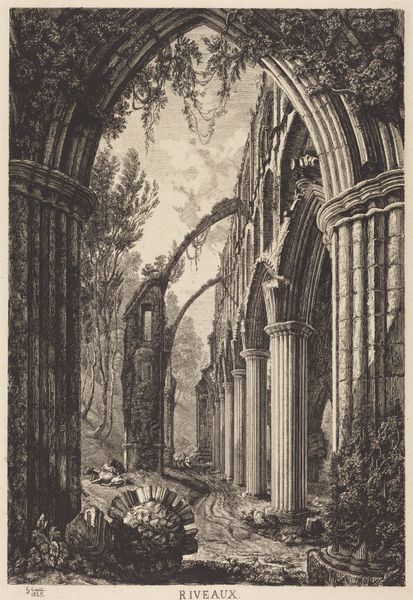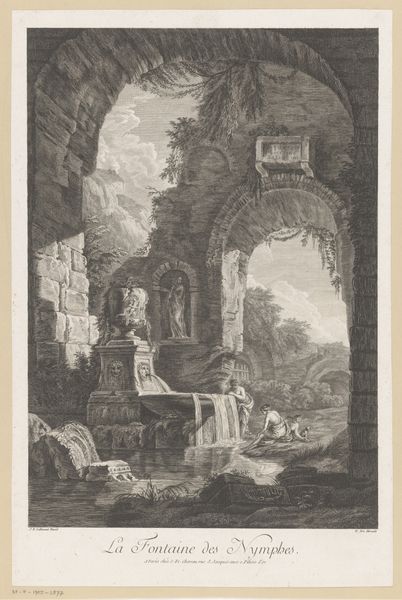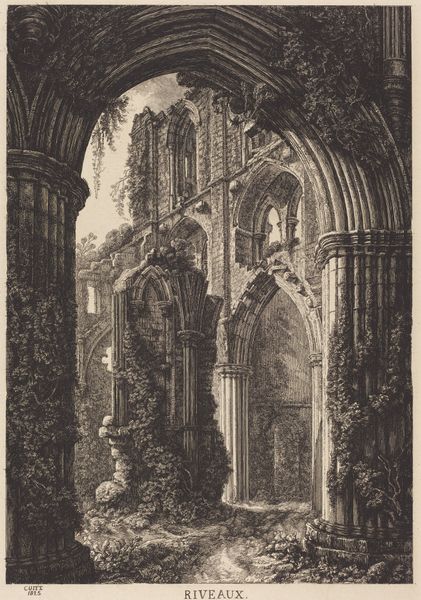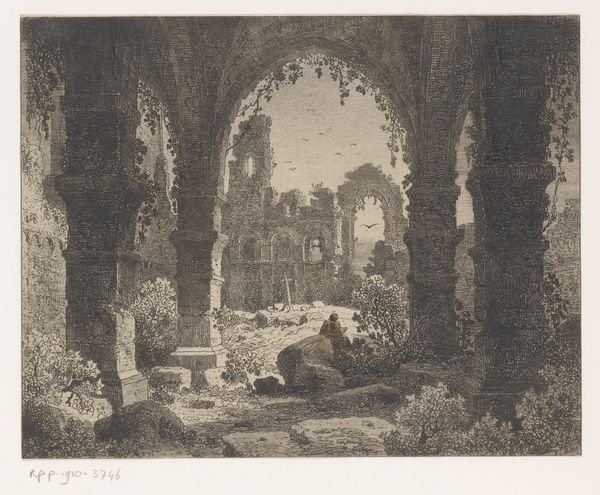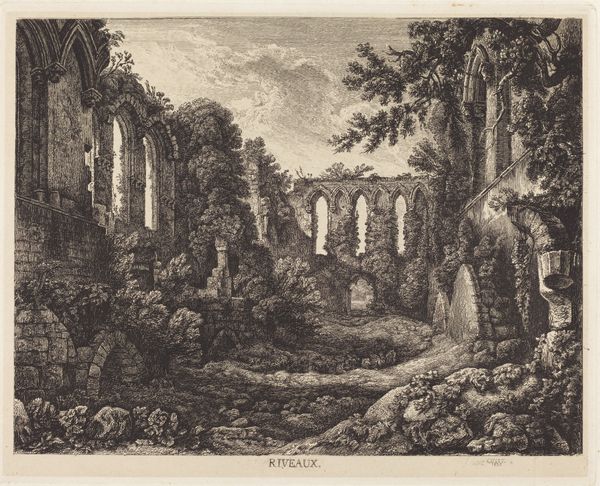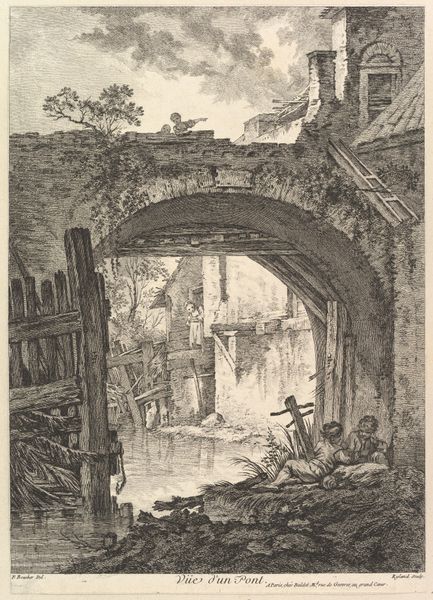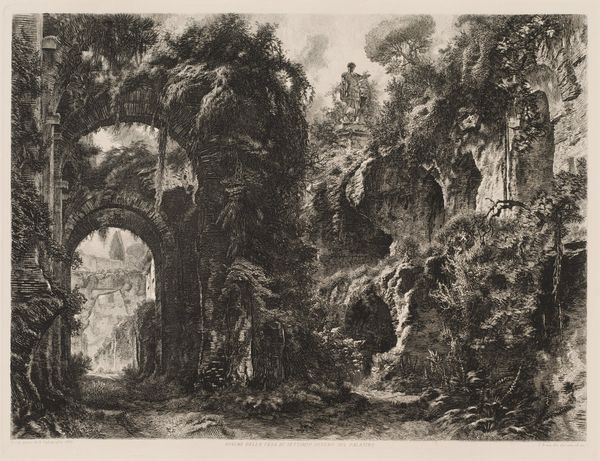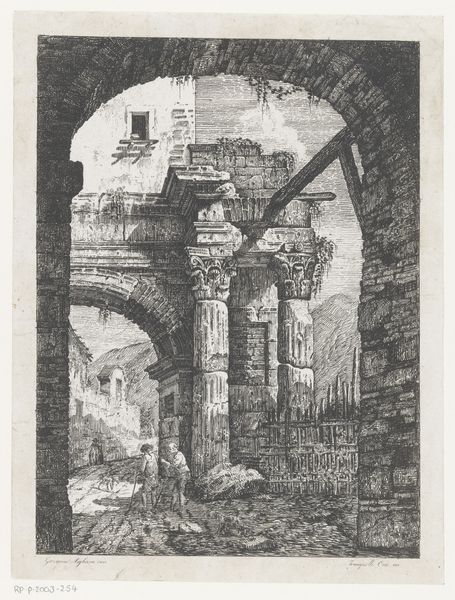
print, engraving, architecture
# print
#
old engraving style
#
landscape
#
pencil drawing
#
romanticism
#
engraving
#
architecture
Copyright: National Gallery of Art: CC0 1.0
Editor: Here we have George Cuitt the Younger’s "The Great Hall at Conway Castle," an engraving. It's a fairly intricate scene of a ruined hall. There is something quite sad and haunting about this decay. What's your take? Curator: For me, it's crucial to examine the physical act of creating this print. The labour involved in etching, the material qualities of the copper plate and ink – these speak volumes about the printmaking industry at the time, about production itself. The “haunting” aspect you mention may, in fact, have more to do with consumer demand for Romantic ruins at the time and less about expressing some unique artistic vision. What evidence do we see of wear to the plate, any visible inconsistencies? Editor: I hadn't considered the consumer aspect, but that makes sense! I am not sure if I can see evidence of wear just by looking, but would that suggest higher or lower quality production overall? Curator: Plate wear speaks to the economic imperative, the balance between profit and artistic value, quality control perhaps abandoned to increase volume. Notice how the architectural details are both precise and yet dissolving. How is our understanding of class and industry mediated by an art form typically positioned as “high art”? Editor: That's fascinating, it brings an entirely new level to this work. Considering the materiality and production puts everything into perspective, and also brings in much wider social and industrial narratives than my first quick reading. Thank you! Curator: Indeed. Seeing art as more than just an isolated creation of beauty but instead, understanding that it can serve as an artefact, and reflecting of wider production and manufacturing landscapes, will transform our engagement with art history.
Comments
No comments
Be the first to comment and join the conversation on the ultimate creative platform.
